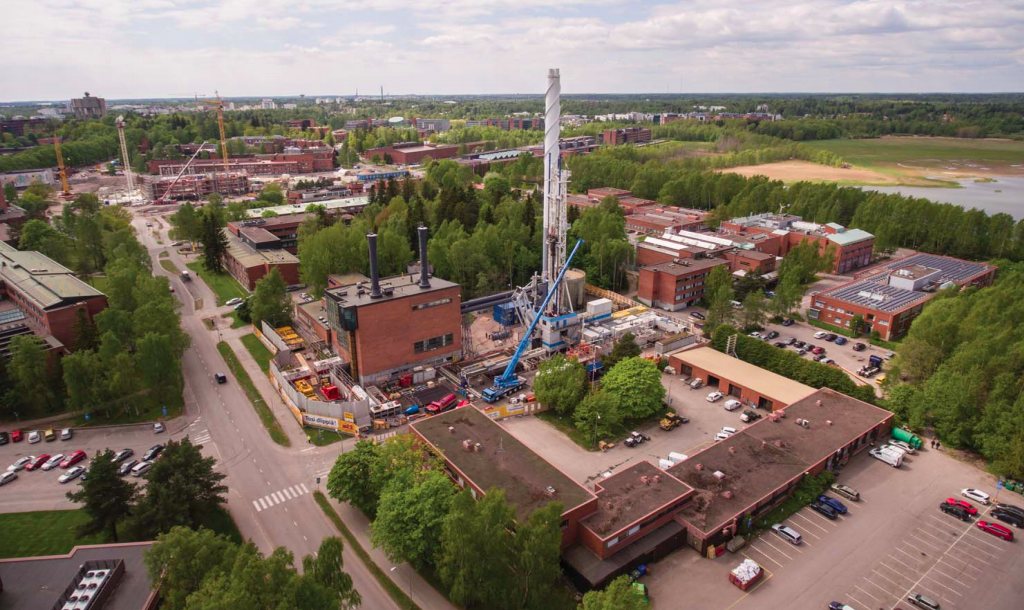World’s deepest geothermal well – geothermal heating ambitions in Finland
With the deepest geothermal well drilled, Finland is looking at utilising geothermal energy for heating as efforts to cut carbon emissions and become climate neutral by 2035, 15 years earlier than targeted by the EU's Green Deal.
With its geothermal project in Espoo, near Helsinki, Finland is a clear pioneer in geothermal energy
In Espoo in southern Finland, Matti Pentti stands in front of a 40-meter-high crane with a protective helmet and goggles on which a huge drill pipe hangs. Pentti used to be a shipbuilder, today he works for ST1. The energy company, based in Helsinki, operates over 1,400 filling stations in Scandinavia and Poland and has its own oil refinery – an obsolete model of the fossil fuel age, it seems. Matti Pentti, however, has little to do with oil and gasoline. The topic that concerns the 57-year-old is geothermal energy: “What we are seeing here is the world’s deepest geothermal borehole that has ever been made. We are here for the first time able to penetrate a depth of six kilometers for commercial purposes and want to produce district heating with the system from mid-2021. There are certainly deeper wells,
Advantages of geothermal energy: Particularly low in emissions
Matti Pentti explains how it works technically: The ST1 engineers pump millions of liters of water through the first borehole into so-called fracture zones: crevices in the underground rock layers. The natural geothermal energy heats the water to around 120 degrees Celsius, and the water is pumped back up through a second borehole and fed into the existing district heating network of Espoo, with 280,000 inhabitants the second largest city in the country after the capital Helsinki. This enables an output of 20 to 40 megawatts to be achieved and that corresponds to around ten percent of Espoo’s heating requirements.
For Matti Pentti, geothermal energy is a key technology when it comes to district heating without emissions: “The only energy we need is the electricity for the pumps. To produce 40 megawatts, these pumps consume four megawatts, so we have an efficiency of 90 percent. And if we use wind energy for this, the emissions are zero. ” In addition, the energy does not have to be stored anywhere, and raw materials do not have to be imported and transported. Only electricity is needed.
No danger from deep holes
In Germany there was and is always criticism of geothermal energy. In a few cases nearby buildings sagged or cracks appeared in the masonry. Four years ago, drilling in Poing, Bavaria, apparently triggered a slight quake. A team from the Leibniz Institute for Applied Geophysics in Hanover has investigated the case and has come to the conclusion that such microquakes can be triggered by drilling, but are not a cause for concern. They are no stronger than the vibration caused by a truck on a bumpy road.
Coal phase-out earlier than in Germany
According to Mikkonen, larger geothermal projects like the one in Espoo could also be a piece of the puzzle in the envisaged energy transition: Helsinki wants to phase out coal by 2029, nine years earlier than Germany. Matti Pentti says: “50 percent of district heating in southern Finland is now produced in coal-fired power plants. Helsinki alone has five such power plants and the largest of them has CO2 emissions of 1.2 million tons per year. We want to show here that there are also alternatives There are ways to produce heat. “
Source: NDR


















